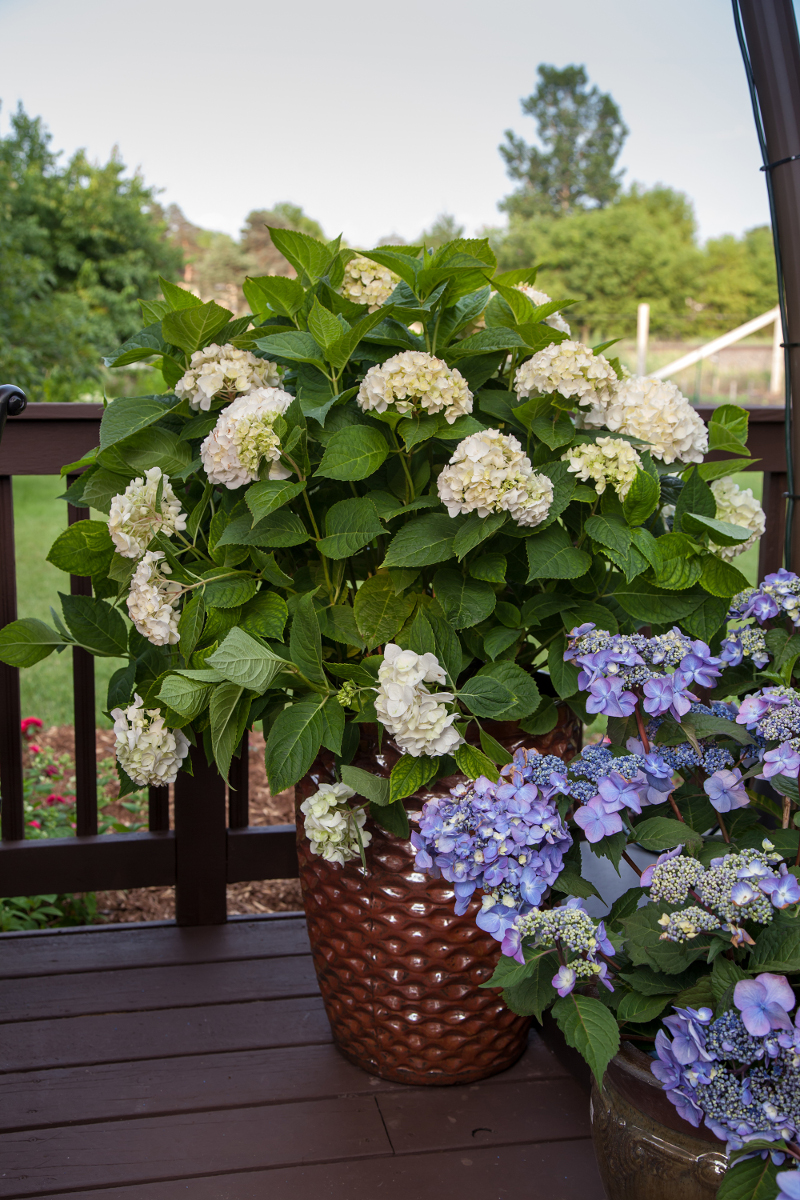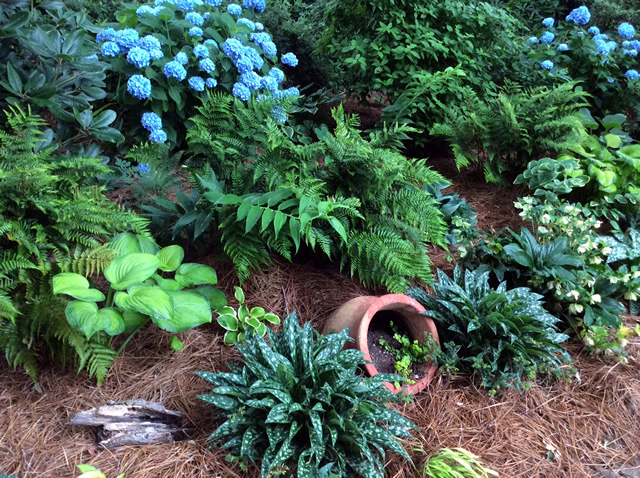Hostas And Hydrangeas: The Perfect Pair For Your Garden
Hostas and Hydrangeas: The Perfect Pair for Your Garden
Hostas and hydrangeas are two of the most popular shade-loving plants in the garden. They are both known for their beautiful foliage, and they can be planted together to create a stunning and colorful display.
In this blog post, we will discuss the benefits of planting hostas and hydrangeas together, and we will provide some tips on how to choose the right varieties for your garden.
Benefits of Planting Hostas and Hydrangeas Together
There are many benefits to planting hostas and hydrangeas together. Here are a few of the most important ones:
- Visual appeal: Hostas and hydrangeas have different textures and colors, which makes them a great combination for creating a visually appealing garden. The large, lush leaves of the hostas provide a perfect backdrop for the delicate flowers of the hydrangeas.
- Shade tolerance: Both hostas and hydrangeas are shade-tolerant plants, so they can be planted in areas of the garden that receive only partial or full shade. This makes them a great choice for gardens that don't get a lot of sunlight.
- Diversity of colors: There are many different varieties of hostas and hydrangeas available, so you can choose plants that will complement each other in terms of color. For example, you could plant a white hydrangea with a blue hosta, or a pink hydrangea with a green hosta.
- Seasonal interest: Hostas and hydrangeas offer different seasons of interest. Hostas are typically in bloom in the spring, while hydrangeas bloom in the summer and fall. This means that you can enjoy beautiful flowers in your garden for most of the year.
Tips for Choosing Hostas and Hydrangeas for Your Garden
When choosing hostas and hydrangeas for your garden, there are a few things you should keep in mind:
- Size: Hostas and hydrangeas come in a variety of sizes, so you'll need to choose plants that will fit the space you have available. If you have a small garden, you'll want to choose smaller varieties of hostas and hydrangeas.
- Color: As mentioned earlier, there are many different varieties of hostas and hydrangeas available. Choose plants that will complement each other in terms of color.
- Light requirements: Both hostas and hydrangeas can tolerate partial or full shade, but some varieties prefer more sun than others. Be sure to choose plants that will thrive in the amount of sunlight your garden receives.
- Hardiness zone: Hostas and hydrangeas are hardy in different zones, so be sure to choose plants that will be hardy in your climate.
Conclusion
Hostas and hydrangeas are two of the most popular shade-loving plants in the garden, and they can be planted together to create a stunning and colorful display. By following the tips in this blog post, you can choose the right varieties of hostas and hydrangeas for your garden and create a beautiful oasis that will last for years to come.
Hostas and hydrangeas are two of the most popular shade-loving plants in the garden. They come in a wide variety of sizes, shapes, and colors, so there's sure to be one that's perfect for your space.
If you're interested in learning more about these beautiful plants, I recommend visiting . This website has a wealth of information about hostas and hydrangeas, including how to choose the right varieties for your climate, how to plant and care for them, and how to prevent pests and diseases.
In addition to its informative articles, also has a beautiful gallery of photos of hostas and hydrangeas. This is a great resource for inspiration if you're looking for new plants to add to your garden.
FAQ of hostas and hydrangeas
Question 1: What are the most important things to consider when planting hostas?
Answer: Hostas are shade-loving plants, so it is important to choose a location that receives partial shade or full shade. They also prefer moist, well-drained soil. When planting hostas, it is important to dig a hole that is twice as wide as the root ball and to amend the soil with compost or other organic matter. Water the hostas well after planting and keep the soil moist throughout the growing season.
Question 2: What are the different types of hostas?
Answer: There are over 4,000 different varieties of hostas, so there is a hosta for every taste. Some of the most popular types of hostas include:
- H. sieboldiana: This is a large hosta with blue-green leaves and white flowers.
- H. fortunei: This is a smaller hosta with heart-shaped leaves and white or lavender flowers.
- H. marginata: This is a variegated hosta with green leaves and a white margin.
- H. plantaginea: This is a hosta with large, heart-shaped leaves and fragrant white flowers.
- H. elegans: This is a hosta with blue-green leaves and lavender flowers.
Question 3: How do I care for hydrangeas?
Answer: Hydrangeas are relatively easy to care for, but they do have some specific needs. They prefer full sun or partial shade and moist, well-drained soil. Hydrangeas should be watered deeply once a week, and they may need to be fertilized monthly during the growing season. In the fall, hydrangeas should be pruned to remove dead or damaged branches.
Question 4: What are the different types of hydrangeas?
Answer: There are two main types of hydrangeas: mophead hydrangeas and lacecap hydrangeas. Mophead hydrangeas have large, round flower clusters, while lacecap hydrangeas have flowers that are arranged in a cascading pattern. There are also many different varieties of hydrangeas, with flowers that range in color from white to blue to pink.
Question 5: How do I get my hydrangeas to change color?
Answer: The color of hydrangea flowers is determined by the pH of the soil. In acidic soil, hydrangeas will bloom blue flowers. In alkaline soil, hydrangeas will bloom pink flowers. You can change the pH of the soil by adding sulfur to acidic soil or lime to alkaline soil.
Image of hostas and hydrangeas
This image shows a beautiful garden with a variety of hostas and hydrangeas. The hostas provide a lush green backdrop for the hydrangeas, which are in full bloom in shades of pink, blue, and purple. The garden is shady, which is ideal for growing hostas.
This image shows a border of hostas and hydrangeas. The hostas are planted in front of the hydrangeas, and they provide a nice contrast of colors and textures. The hydrangeas are in full bloom, and their flowers are a beautiful shade of blue.
This image shows a container with a variety of hostas and hydrangeas. The hostas are planted in the front of the container, and the hydrangeas are planted in the back. The container is placed in a shady spot, which is ideal for growing hostas.
This image shows a woodland garden with a variety of hostas and hydrangeas. The hostas provide a lush green backdrop for the hydrangeas, which are in full bloom in shades of pink, blue, and purple. The garden is shady, which is ideal for growing hostas.
This image shows a cottage garden with a variety of hostas and hydrangeas. The hostas provide a lush green backdrop for the hydrangeas, which are in full bloom in shades of pink, blue, and purple. The garden is a bit more formal than the other gardens, but it still has a cozy feel.




Post a Comment for "Hostas And Hydrangeas: The Perfect Pair For Your Garden"